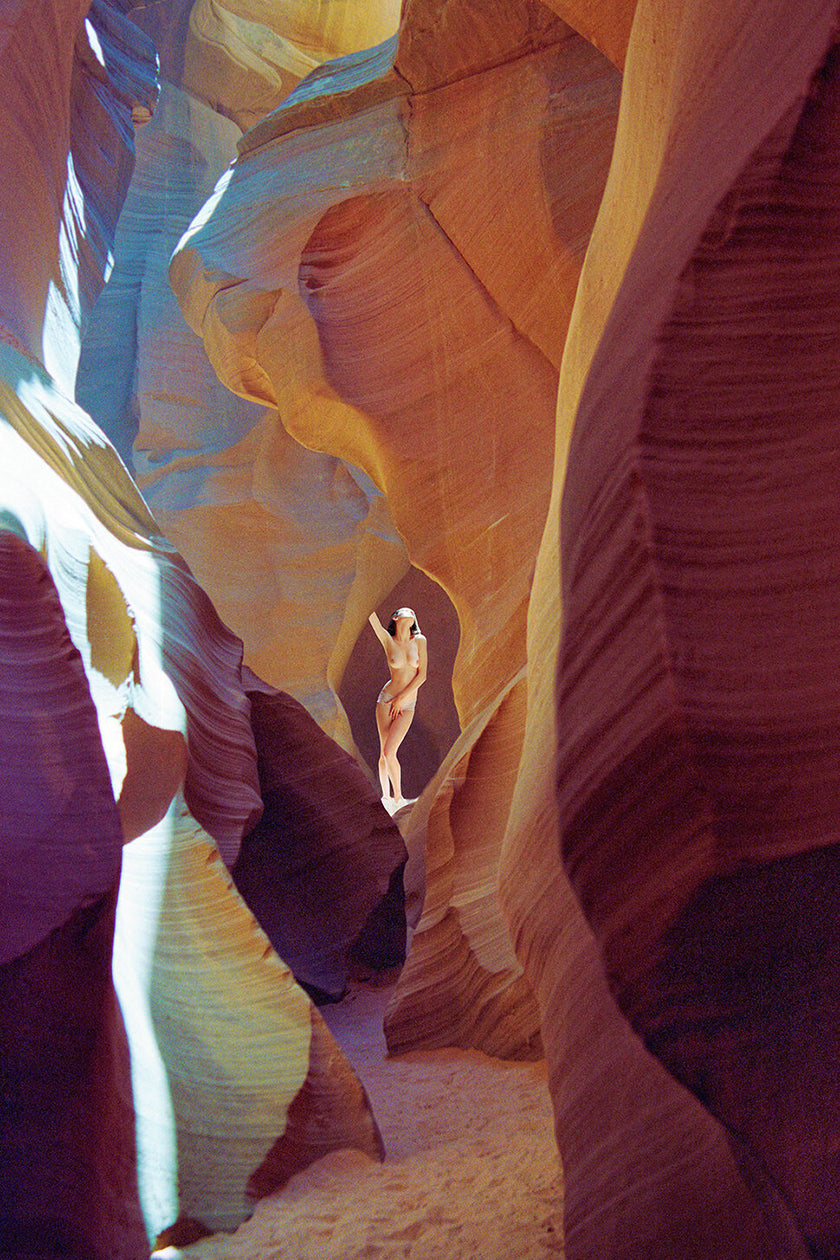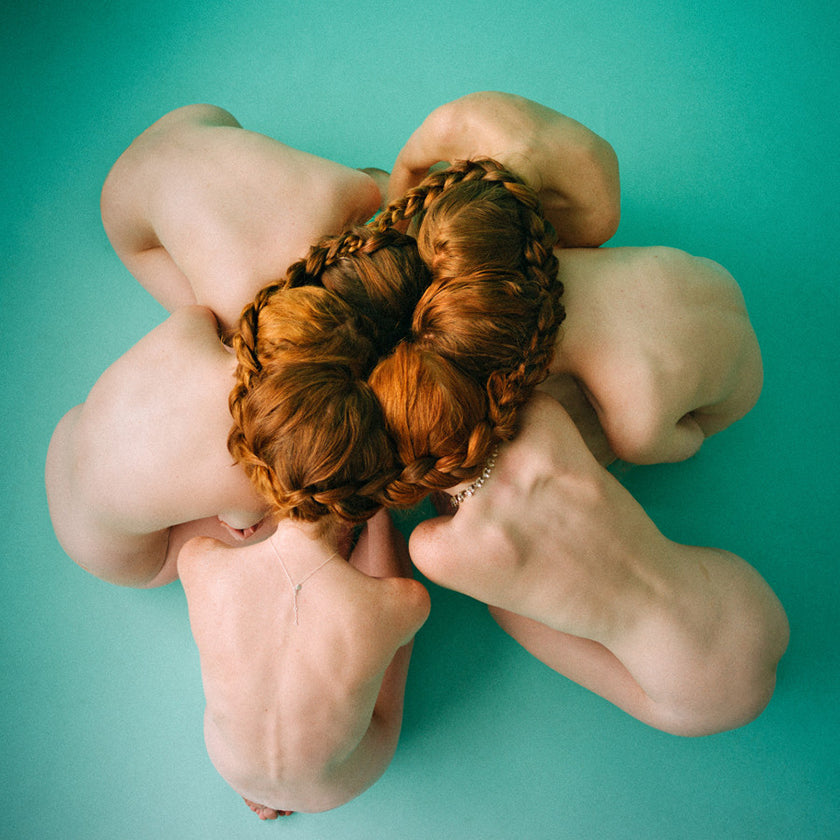Your Cart is Empty
When you buy a book, we plant a tree
We meet the artist that photographs the body of women for other women

A fantastical photographer that uses the power of the lens to address the female body without an exploitative gaze, showing that vulnerability is a strength, and to celebrate feminine sensuality, Amanda Charchian explores the female form like a poetic motif.
With a published book behind her and clients such as Gucci, Chloe, and Vogue Italia, Amanda has developed an intuitive signature aesthetic that draws on unity, freedom, and explores vulnerability. Her work is erotically charged and transforms overused locations into renewed versions of itself, which has led to TIME, Interview Magazine, L'Officiel ART, and i-D among others documenting her work. "Empowering each other is of highest importance" to Amanda, and she feels honored to know her images have gone onto become celebratory posters for International Women's Day across the world.

Her entrancing and provocative 'Ginger Entanglement' series has become the cover of gestalten Fall 2019–a stunning and raw scene which feels like a modern interpretation of Antonio Canova’s statue “The Three Graces.” The image is powerful and lures you into her world, but it also feels intimate, uneasy, and evokes a sense of uncertainty. We took this opportunity to delve into Amanda's life and find out more about the artist, how she establishes a connection with models, and the story behind the distinctive red-headed women photograph who are joined by their braided hair.
Born to Jewish Iranian migrants in Los Angeles, 1988, Amanda is a first-generation American in her family. Having spent much of her childhood navigating the culture of Iran, a country she only had second-hand experience from, Amanda recalls being "quite introspective and I had a private world, often retreating into books." Photography opened up to her when her father gave her a 35mm Nikon–here she began to discover a medium that allowed her to portray the world as she saw it and express herself creatively and emotionally.
We ask Amanda if her family heritage has helped add another perspective to how she approaches work, to which she replied, "Iranian people are very elegant, smart, ambitious, and maximalist. I believe all of these qualities have made their way into my work! Additionally, I did not come from a culture that champions female artists, thus providing me with a sense of urgency and an acknowledgment of privilege to be able to express myself freely."

Turning back the clock to her teenage years, Amanda primarily sculpted and painted. It was photography that later captured her. Amanda took a lot of photographs growing up and spent her allowance developing the film rolls at the drug store. She says photography felt like "second nature" to her at the time–she struggled to see it as a potential career. "When I was at art school I photographed elaborate scenes with models, sets, and styling for my paintings. Eventually, I recognized that the photographs were more interesting than the paintings, despite the fact that they were painted on slabs of marble," she explains to us.
Amanda earned a Bachelor of Fine Arts from Otis College of Art and Design in 2010 and continued exploring photography after graduation, getting her first commission two years later. She recalls CR Fashion Book being her first editorial in 2012. "My dear friend Henry Hopper and I were sent to New York from Los Angeles to photograph the hugging saint Amma for three days as the spiritual leader was giving a darshan to her followers in a convention center," which she remembers being a profound experience. She was still a sculptor at the time, working on commissions and exhibitions in the fine art realm while testing the waters of the photography world too.
Over time photography became her focus, but Amanda's art and sculptural background have influenced the composition and tonality of her work. She is now celebrated for depicting the intimate process of photographing 'the female psyche,' she explores the bodies of women for women, nudity included. She previously told The Huffington Post that, "We live in a world where the internet cannot make a distinction between nudity and pornography," between art and censorship, and what is conceptual or explicit. Her work asks questions of the digital age and our attitude toward nudity.
"Intuitive, exploratory, natural, and sensual" is how Amanda describes her style of photography. While the media label her work as a fuse of art, fashion, and photography. For Amanda, art is about the intention, that is what separates it from fashion or documentary. We ask her what message or intentions she aims to transmit into her photography, she replies, "I have begun to organize my life in both personal and work capacities under two umbrellas: Pleasure and Service."

Under the service umbrella, Amanda traverses fantasy into her fashion editorials and commercial work. She pushes photography into another realm of imagination, something often unique only to fashion. "I use fashion to express the parts of my reality that do not otherwise have an exalting platform. It becomes an exhibition of emotions and curiosity through the performance of a photoshoot. It is also a means to learn about the world through experimentation," she explains.
Looking at 'Ginger Entanglement,' her series of red-headed women connected through their braided hair-emotions of intimacy, loneliness, and vulnerability are aroused from the photoshoot. We ask her to talk us through the story behind her image, she tells us:
"This image was conceived in my mind as I was getting acupuncture in 2013. I had the vision quite strongly in my mind. It came fully formed and although at first, I felt it would be difficult to emulate, I found an amazing braid artist and many red-headed women to join me in bringing my vision to life!"

This image has gone onto become a powerful symbol for International Women's Day, representing unity and feminine togetherness. It is a celebration of the visible and invisible components that conjure the sensations of womanhood for many.
For Amanda's work to represent unity, empowerment, and sensuality, she has to create a level of trust between the models that allow for more energy to be added during the shoot. "I often try to create an environment that allows for vulnerability and safety. I believe it's important that the model has the freedom to express their inner working and allow there to be an exchange in energy where we are both giving and taking," she goes on to say, "It is not always a given, but this is an advantage of being a female who shoots females. My intention is always to empower."
Change is constant, something Amanda embraces and wants to propel through her art. She wants to take photography as humanly far as possible, evolving and changing, she says "a mirror to where I am in my life." Currently, Amanda is represented by Fahey/Klein Gallery in Los Angeles and Huxley-Parlour Gallery in London. In 2016 she released her first book, Pheromone Hotbox, a monograph of work from 2012 to 2015. From Iceland to Costa Rica to Corsica and beyond, she documents nude feminity in surreal landscapes. She always visits more known locations but photographs them from a different perspective, often invigorating a heavily photographed environment, such as Ricardo Bofill’s La Muralla Roja and Woodstock, state of New York.
While the internet-age and algorithms have censored aspects of portraying the female body, it has allowed for a diverse and open pool of creatives to convey their opinion on the portrayal of the body and feminity. This has been refreshing in an environment once dominated by the ubiquitous male representation of the female body, and the dated notion that 'sex sells.' Amanda's work is empowering not exploitative or sexual. It is an honest and artistic medium that prevails the emotions of womanhood as singular or collective experiences.
From Highsnobiety to Folkloric heritage, explore our Design & Fashion titles